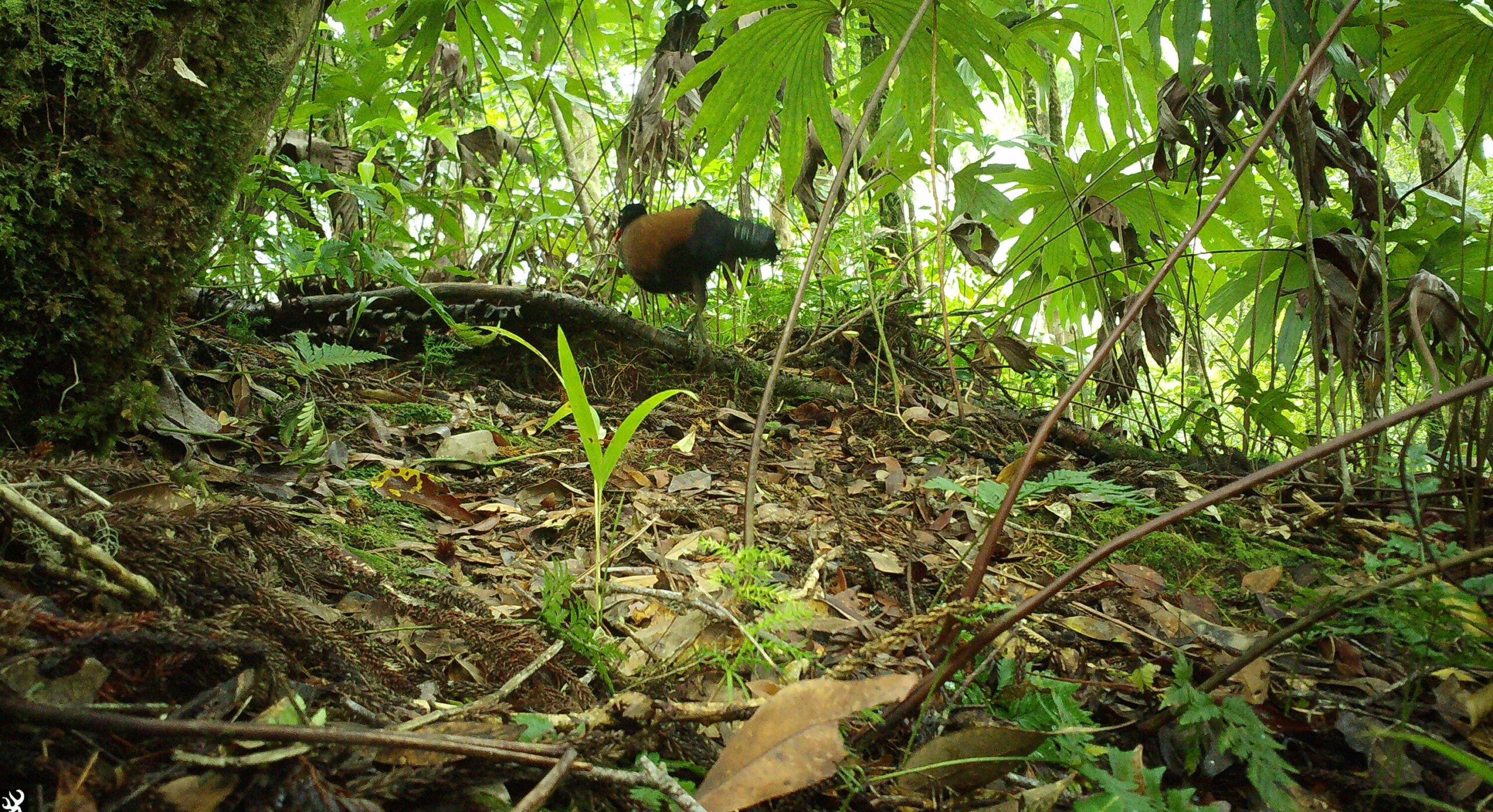
A bird thought to be extinct for 140 years has been rediscovered in the forests of Papua New Guinea.
The black-naped pheasant-pigeon was documented by scientists for the first and last time in 1882, according to a news release from nonprofit Re:wild, which helped fund the search effort.
Rediscovering the bird required an expedition team to spend a grueling month on Fergusson, a rugged island in the D’Entrecasteaux Archipelago off eastern Papua New Guinea where the bird was originally documented. The team consisted of local staff at the Papua New Guinea National Museum as well as international scientists from the Cornell Lab of Ornithology and the American Bird Conservancy.
Fergusson Island is covered in rugged, mountainous terrain — making the expedition especially challenging for the scientists. Many members of the community told the team that they hadn’t seen the black-naped pheasant-pigeon in decades, says the news release.
But just two days before the researchers were scheduled to leave the island, a camera trap captured footage of the exceptionally rare bird.
“After a month of searching, seeing those first photos of the pheasant-pigeon felt like finding a unicorn,” John C. Mittermeier, director of the lost birds program at American Bird Conservancy and co-leader of the expedition, said in the release. “It is the kind of moment you dream about your entire life as a conservationist and birdwatcher.”
The black-naped pheasant-pigeon is a large, ground-dwelling pigeon with a broad tail, according to the release. Scientists still know little about the species and believe the population is small and decreasing.
Insight from local residents was crucial for the scientists to track down the elusive bird.
“It wasn’t until we reached villages on the western slope of Mt. Kilkerran that we started meeting hunters who had seen and heard the pheasant-pigeon,” Jason Gregg, a conservation biologist and co-leader of the expedition team, said in the release. “We became more confident about the local name of the bird, which is ‘Auwo,’ and felt like we were getting closer to the core habitat of where the black-naped pheasant-pigeon lives.”
They placed a total of 12 camera traps on the slopes of Mt. Kilkerran, which is the island’s highest mountain. And they placed another eight cameras in locations where local hunters reported seeing the bird in the past.
A hunter named Augustin Gregory, based in the mountain village Duda Ununa, provided the final breakthrough that helped scientists locate the pheasant-pigeon.
Gregory told the team that he had seen the black-naped pheasant-pigeon in an area with “steep ridges and valleys,” says the news release. And he had heard the bird’s distinctive calls.
So the expedition team placed a camera on a 3,200-foot high ridge near the Kwama River above Duda Ununa, according to the release. And finally, just as their trip was ending, they captured footage of the bird walking on the forest floor.
The discovery was a shock for the scientists and the local community alike.
“The communities were very excited when they saw the survey results, because many people hadn’t seen or heard of the bird until we began our project and got the camera trap photos,” said Serena Ketaloya, a conservationist from Milne Bay, Papua New Guinea, in the news release. “They are now looking forward to working with us to try to protect the pheasant-pigeon.”
It’s still not clear just how many of the black-naped pheasant-pigeon are left, and the rugged terrain will make identifying the population difficult. A two-week survey in 2019 failed to find any proof of the bird, although it did discover some reports from hunters that helped determine the locations for the 2022 expedition.
And the discovery might provide hope that other bird species thought extinct are still out there somewhere.
“This rediscovery is an incredible beacon of hope for other birds that have been lost for a half century or more,” said Christina Biggs, the manager for the Search for Lost Species at Re:wild, in the release. “The terrain the team searched was incredibly difficult, but their determination never wavered, even though so few people could remember seeing the pheasant-pigeon in recent decades.”






